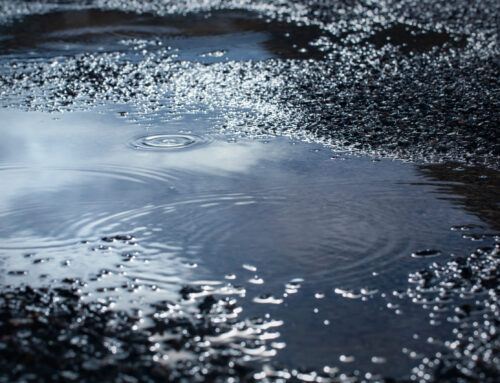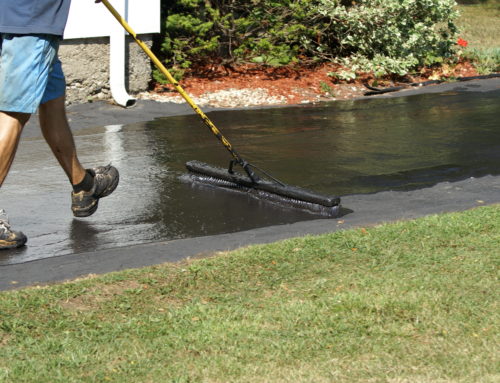Looking to know just what goes into that compound all over the place? Covering hundreds upon thousands of square miles across the globe, asphalt -asphalt concrete to be precise- is seemingly one of the key building blocks of human civilization, so what then are its key building blocks? That is what we are here to tell you today on the Sunrise Asphalt blog. Here is how asphalt is made.

Asphalt concrete, commonly called just asphalt in the U.S., is made up of two key components: dried crushed rock and petroleum mixtures. The fine and coarse stone aggregate is stored separately until they are then mixed with the petroleum (the actual asphalt) compounds. The materials are mixed at asphalt plants and heated to its liquid state where it is then immediately loaded into trucks or storage to be heated and utilized. There are several variations for mixing asphalt and the aggregate.
Asphalt itself, known as bitumen in most other countries, is the sticky, black, liquid (or semi-solid at most) form of petroleum. It occurs naturally and can then be refined into a more specific form called pitch.
- Hot mix asphalt concrete is made by heating the asphalt component higher and drying stone aggregate before mixing. The mix is made at a temperature of roughly 300 °F. It must be laid, paved, and compacted at a hot temperature. Hot mix asphalt concrete (HMAC for short) is the most commonly used asphalt in high traffic areas like highways.
- Warm mix asphalt concrete is made by adding waxes, emulsions, zeolites, or even water to the asphalt before it is mixed. This makes it possible for the mixture to be created at a lower temperature, in turn the laying, paving, and compacting can be done at a lower temperature. This decreases the consumption of fossil fuels in the entire process. The use of warm mix asphalt is on the rise
- Cold mix asphalt is created when the asphalt is first emulsified with water and soap before being mixed into the aggregate. This variant of asphalt is used predominantly as a patching material or on less heavily traveled roads.
There are a few other less common mixtures including cut-back asphalt, mastic asphalt, high modulus, and more.
Asphalt has hundreds of uses past roadways and that makes the recyclable nature of asphalt a prize. Asphalt is 100% reusable and so, when the question is “how was this asphalt made,” the answer is often that it is reused. It’s tore up, reheated, and recycled. The asphalt for the neighborhood basketball court may have once been a mall’s parking lot across town. In that way, the way asphalt is made is only half the equation, the other half is the way it is recycled. On the small scale, the asphalt is separated into a few different types: blacktop cookies, reclaimed asphalt pavement, and asphalt millings and each have their own purpose, cookies for example are large chunks of hot mix asphalt that are used to patch or repair potholes.



